Keywords: Traumatic Accidents.
The other day I saw someone with persistent problems in the right arm. The symptoms consisted of pain in the arm and shoulder, especially around the joints. These problems started after she broke her wrist in a falling accident.
You might think her post-traumatic stress symptoms were the result of the fall, breaking her wrist, and the setting of the wrist during an operation, but we also need to look at it from another perspective. Bones don't break very easily unless you fall very awkwardly and hard. Even then, there should be enough resilience in the body and mind to compensate for the shock and additional tension. It is only when there have been stresses already on the bone that an extra stress can result in injury.
Traumatic Accidents and How the Body Compensates
Stresses on bones are caused by muscle tensions that pull the bones out of alignment. This disalignment causes an unequal pull on bones, and puts them under stress. In our case history example, we should question whether her symptoms are solely the result of the accident, or if that is just part of the equation.
On examining her, I noticed that the muscle-tendon attachments (onto the bone and joints) on the posterior(backside) part of the arm were very tense. These different tensions-- of the forearm, upper-arm and into the chest area-- are connected by connective tissue, called fascia. They thus form one tension line throughout the arm into the chest, and possibly further down the body.
When someone comes to see me, I always want to hear what is going on in their lives. I am interested in what they are struggling with and what is putting them under stress. This helps me to put the picture together as to how the body stores and processes psychological stresses. Having a good basis of knowledge, through experience, of which emotional stresses go where in the body, is an excellent help in mapping out how mind affects body.
Emotional Stress, Traumatic Accident and Physical Injuries
The lady I was seeing for her arm pains was in her sixties. When people are in that age group, you often notice there are several layers of tensions in the body, probably due to what they have collected throughout their lives. You will see this in their body posture very easily, and by the feel of the body. It makes it harder to be very specific and work with the problem for which they are actually seeking treatment.
It is easy to get drawn into complexity and thus lose overview, then fail to work through tensions methodically, be they physical or psychological. This is a difficulty many body-workers face. You can be sensitive enough to pinpoint tensions in the body, but if you fail to have insight into how it all hangs together, you will end up breaking up a tension in one spot only for it to pop up somewhere else.
Traumatic Accidents and How Tensions are Layered
You've got to listen to the information which comes through your hands, what the client tells you, and what you pick up with your sixth sense. You have got to see how the tension is structured, layered, and then feel what needs to be done first, always double checking to see if an applied manipulation releases and resolves a tension. To be too eager to work and do a lot doesn't mean there is a resolution of the problem. It might make your client (and your ego) feel good because you're shifting a lot of tension, but if the results don't last, what is the point?
The lady with pain symptoms in her arm and shoulder was sound of mind but has been under stress; she has been very worried about her daughter and daughter-in-law for the past year because they have both been ill. Persistent worries relate to the duodenum (first part of the small intestines) and this is where I also found tension. The duodenum is mostly on the right side of the body, situated around the belly button. Putting it all together, I diagnosed psychological stress in the form of persistent worries over a period of time that translated into physical tension in the duodenum.
Tensions of an organ are compensated for by tensions in the connective tissues and musculoskeletal system. Additionally, stress tenses up the nerves enervating the duodenum. So, duodenum tension affects the vagus and indirectly the phrenic nerves, mid-upper neck, possibly also affecting the brachial plexus that has nerves running into the right arm. Through the connective tissue, fascia, tension line it affects the musculoskeletal system from the duodenum to the diaphragm - mediastinum – pectoralis minor – anterior deltoid muscle – biceps – brachoradialis – wrist. That's specific enough for me to work with.
Traumatic Accidents and Working Holistically to Get the Full Picture
During a session, I assessed progress and to see if she was willing to talk, asked her to consciously relax where I was working, and moved between addressing the connective tissues, organ, musculo-skeletal and psychological tensions until they resolved.
To recap: physical tensions and even accidents are almost never stand-alone incidents. They are likely to be preceded by a psychological element that has had an impact on the resilience of the body and mind. This is important if we want to look at it in a holistic yet grounded way.
Have you been through a traumatic accident and it caused long term symptoms? Leave your comment below.
